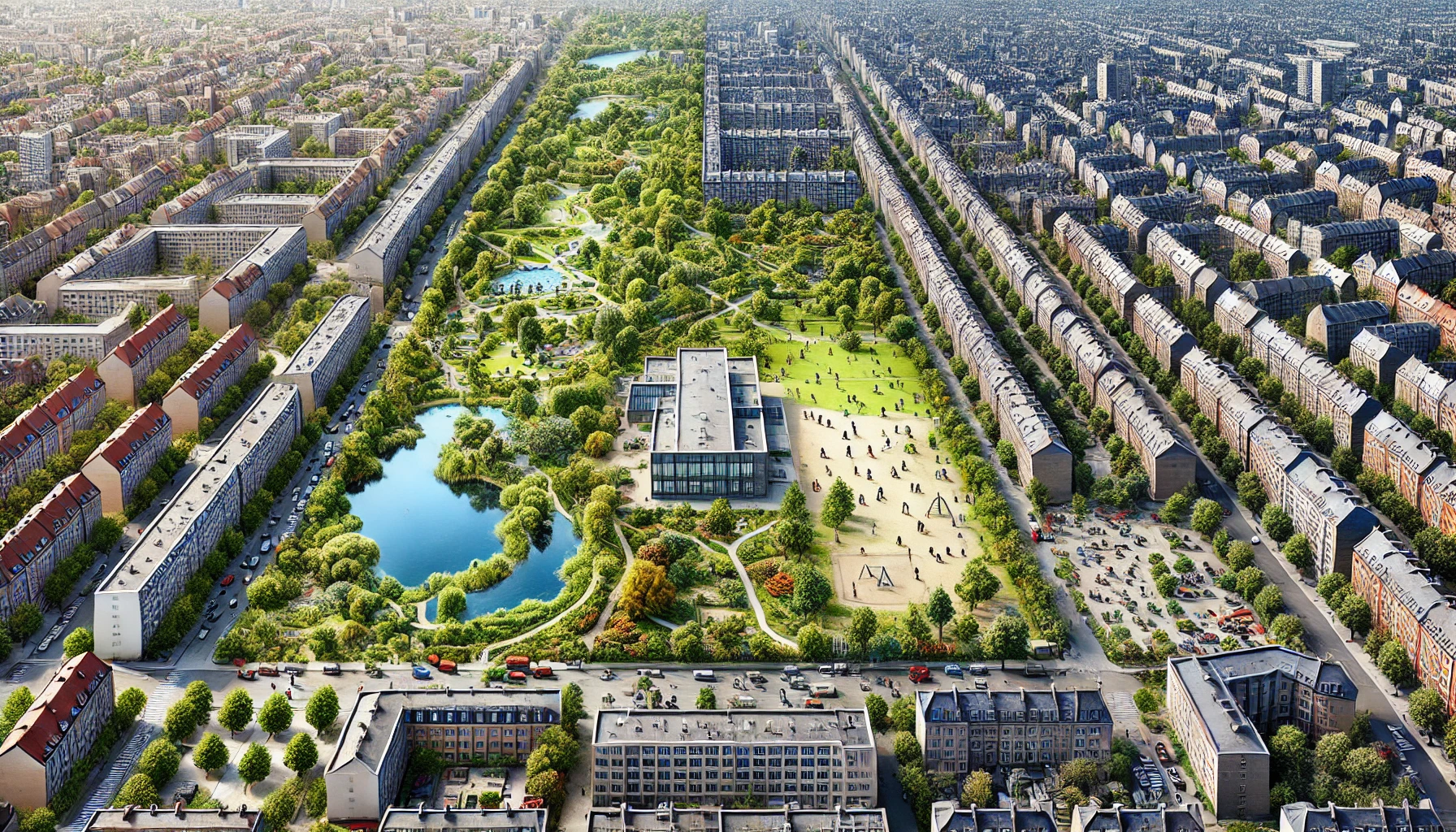Greening Europe’s Schools: The Socio-Economic Gaps in Access to Natural Spaces
A study by Vrije Universiteit Brussel reveals significant socio-economic disparities in children’s access to green and blue spaces around schools in four European cities, highlighting the need for more equitable urban greening strategies. The research shows that wealthier neighborhoods generally have better access to natural amenities, while many schools remain under-served.

A recent study conducted by researchers from the Vrije Universiteit Brussel's Department of Geography and Cosmopolis Centre for Urban Research, in collaboration with the Interface Demography at the Brussels Institute for Social and Population Studies, has revealed significant disparities in children’s access to green and blue infrastructure (GBI) across school environments in four major European cities Brussels, Barcelona, Rotterdam, and Paris. This study, published in Ecological Indicators, provides crucial insights into how socio-economic inequalities influence the distribution of natural spaces around schools, with potential long-term implications for children's well-being and development.
Unequal Access to Green and Blue Spaces Around Schools
The study analyzed 1,259 primary schools in these cities, focusing on the presence of green spaces (such as parks and tree-lined areas) and blue spaces (such as rivers and lakes) within a 300- to 500-meter radius of school entrances. The researchers used data from the European Copernicus Urban Atlas to measure changes in GBI over time, specifically between 2006 and 2018. They also examined the socio-economic characteristics of the neighborhoods surrounding these schools, including median income levels and educational attainment, to assess the correlation between these variables and the availability of natural spaces.
The Luxury Effect: Wealthier Neighborhoods, Greener Schools
The findings indicate a pronounced disparity in GBI distribution based on socio-economic factors, with schools in wealthier neighborhoods generally benefiting from more abundant green and blue infrastructure. This was particularly evident in Brussels and Rotterdam, where the study found strong positive correlations between the socio-economic status of neighborhoods and the amount of GBI around schools. In these cities, schools located in affluent areas had significantly higher tree canopy coverage and access to green spaces compared to those in less affluent areas. This pattern reflects what is known as the "luxury effect," where wealthier populations have greater access to natural amenities, contributing to better health and quality of life for children in these neighborhoods.
Paris and Barcelona: A Different Story
In contrast, the study revealed a different trend in Paris and Barcelona, where some underprivileged neighborhoods exhibited relatively higher levels of green spaces around schools. This phenomenon can be partly attributed to historical urban planning decisions. For instance, in Paris, the development of public green spaces in peripheral neighborhoods, often in areas with social housing, has resulted in greater GBI in these less affluent areas. This pattern, sometimes referred to as the "Haussmann paradox," challenges the typical luxury effect by showing that not all affluent areas are rich in green spaces. In Barcelona, while wealthier neighborhoods had more tree canopy cover, they did not necessarily have more public green spaces, indicating a complex relationship between socio-economic status and different types of GBI.
Limited Progress in Greening School Environments
Despite these variations, a common thread across all four cities was the overall low level of GBI around schools, with more than 90% of schools having less than the recommended 30% tree canopy cover in their surroundings. This finding is alarming given the well-documented benefits of natural spaces for children's physical and mental health, including reduced stress, enhanced cognitive development, and greater opportunities for physical activity. The lack of significant improvement in GBI between 2006 and 2018 suggests that urban greening policies have not sufficiently prioritized school environments, which are critical spaces for children’s daily exposure to nature.
A Call for Equitable Urban Greening Policies
The implications of these findings are significant for urban planners and policymakers. The study underscores the need for more equitable urban greening strategies that specifically target schools in underprivileged neighborhoods. Such strategies could include integrating GBI into the broader urban fabric around schools, ensuring that every child has access to the benefits of nature regardless of their socio-economic background. The researchers suggest that cities adopt a more holistic approach to urban greening, one that not only focuses on residential areas but also prioritizes public spaces like schools, which play a vital role in children's daily lives.
The study provides a compelling case for rethinking how urban greening policies are implemented in European cities. By focusing on schools as key sites for nature-based interventions, cities can help bridge the socio-environmental gap and ensure that all children, regardless of where they live, can enjoy the health and developmental benefits of access to green and blue spaces. This approach would not only contribute to greater environmental justice but also support broader public health and urban resilience goals.
- FIRST PUBLISHED IN:
- Devdiscourse










